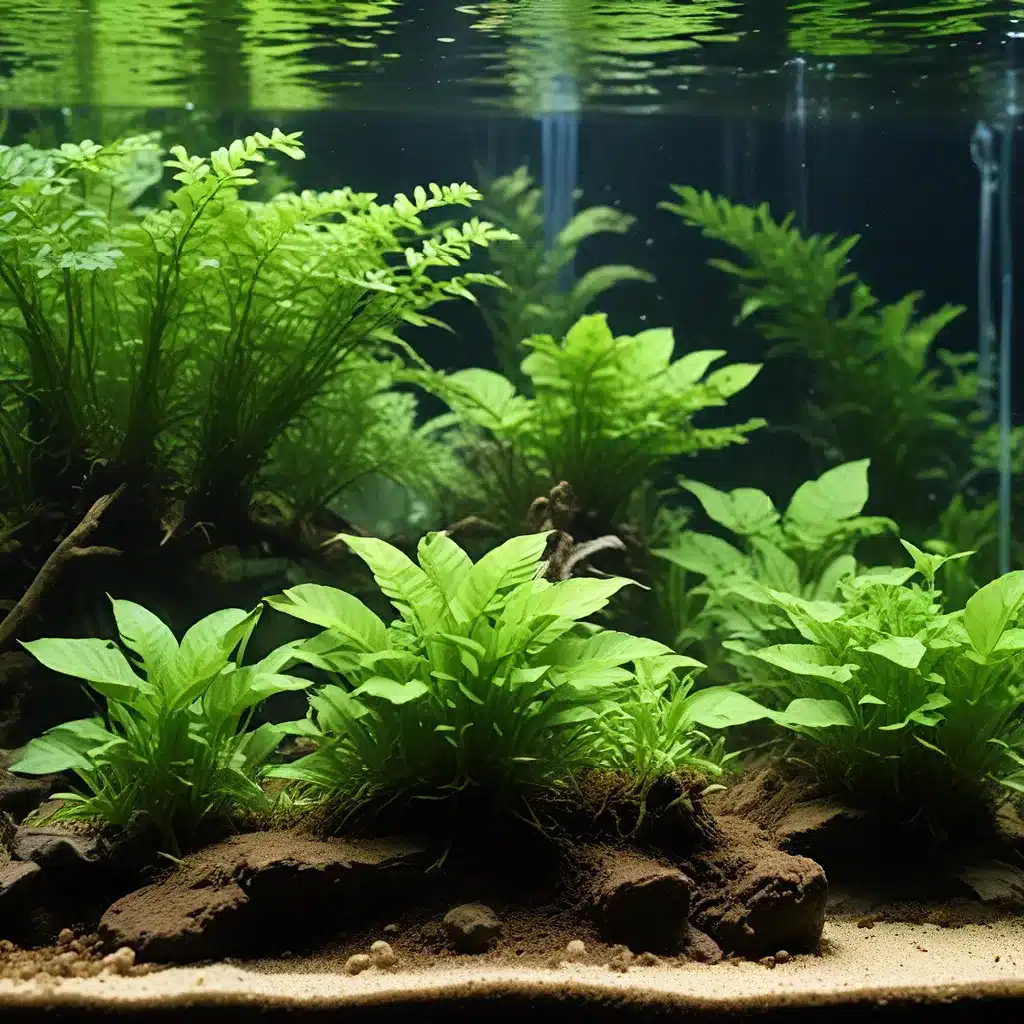
Understanding the Basics of Plant Propagation
Plant propagation is the process of creating new, genetically identical plants from existing ones. This technique is essential for aquarists looking to expand their underwater gardens and create lush, thriving aquascapes. Whether you’re a seasoned hobbyist or just starting out, mastering the art of plant propagation can open up a world of possibilities for your aquarium.
One of the most common and popular propagation methods for aquarium plants is water propagation. This technique involves placing plant cuttings or offshoots directly in water, allowing them to develop roots before transplanting them into the substrate. While water propagation may seem straightforward, there are some crucial considerations to ensure a successful transition from water to soil.
The Challenges of Water Propagation
Water propagation is often touted as an easy and convenient way to multiply your aquatic plants. However, the real challenge arises when it’s time to transplant those water-grown cuttings into the aquarium’s substrate. The delicate, water-adapted roots of these plants can struggle to acclimate to the denser, less aerated soil environment, leading to potential plant stress or even loss.
The primary reason for this difficulty lies in the fundamental differences between water roots and soil roots. Water roots are typically thin, fragile, and adapted to the high-oxygen, nutrient-rich conditions of the water column. In contrast, soil roots are generally thicker, more robust, and better equipped to anchor the plant and absorb nutrients from the substrate.
When transitioning a water-propagated plant to the aquarium, the sudden change in growing medium can be a significant shock, causing the plant to wilt, experience stunted growth, or even die. Addressing this challenge is crucial for ensuring the long-term success and health of your aquarium plants.
Preparing for a Successful Transplant
To facilitate a smooth transition from water to soil, it’s essential to create an optimal environment for your water-propagated plants. This involves carefully preparing the substrate and adjusting your planting technique to accommodate the delicate nature of water roots.
Crafting an Airy Substrate Blend
One of the key factors in ensuring a successful transplant is the composition of your aquarium’s substrate. A substrate that is too dense or compacted can suffocate the delicate water roots, depriving them of the oxygen they need to thrive.
To address this, consider creating a well-aerated substrate blend that incorporates a variety of porous materials. A mix of 40% perlite or pumice, 30% bark chips, and 30% coco coir or worm castings can provide the perfect balance of air pockets and moisture retention. This airy substrate will allow the water roots to gradually acclimate to the new environment, reducing the risk of transplant shock.
Planting Technique: Gently Does It
When transplanting water-propagated plants, it’s crucial to handle them with the utmost care. Avoid being too forceful or aggressive during the planting process, as this can damage the delicate water roots.
Instead, gently tease the roots apart and spread them out within the substrate, ensuring they have ample space to grow and establish themselves. Avoid burying the roots too deeply, as this can lead to suffocation and rot. Aim to replicate the depth at which the plant was growing in the water propagation container.
After planting, water the substrate thoroughly, allowing the water to fully saturate the soil and displace any air pockets. This will help ensure the roots have immediate access to the moisture and oxygen they require.
Ongoing Care and Monitoring
Once your water-propagated plants are in the aquarium, it’s important to closely monitor their progress and adjust your care routine as needed.
Watering and Drainage
Keep the substrate consistently moist, but avoid oversaturating it. Allow the top layer to partially dry out between waterings to prevent root rot. Ensure the aquarium’s drainage system is functioning properly, as excess water buildup can also be detrimental to the plants’ health.
Nutrient Supplementation
During the initial transplant period, consider supplementing your plants with a liquid fertilizer or nutrient-rich substrate additive. This can help provide the additional nutrients and support the plants need to establish their root systems in the new environment.
Monitoring and Adjustments
Closely observe your plants for any signs of stress, such as wilting, discoloration, or stunted growth. If you notice any issues, try adjusting the substrate composition, water parameters, or lighting to better suit the plants’ needs.
Remember, each aquarium and plant species is unique, so it may take some trial and error to find the perfect balance for your underwater garden. Patience and a keen eye for detail will be your greatest allies in ensuring the long-term success of your water-propagated plants.
Unlocking the Potential of Propagation
By mastering the art of water propagation and the subsequent transplant process, you’ll unlock a world of possibilities for your aquarium. Not only can you expand your plant collection, but you can also create unique and visually stunning aquascapes by strategically placing your newly propagated specimens.
Sustainable aquarium practices, such as propagating your own plants, can also help reduce the environmental impact of the hobby, as it reduces the need for purchasing new plants from commercial sources.
Embrace the challenge of water propagation, and let your aquarium flourish with a vibrant, thriving underwater garden. With the right techniques and a little patience, you can transform your aquarium into a true aquatic oasis.
Remember, the key to successful plant propagation lies in understanding the unique needs of water-adapted roots and creating an environment that allows them to thrive. By following these best practices, you’ll be well on your way to multiplying your aquatic greenery and taking your aquascaping skills to new heights.
For more aquarium care tips and inspiration, be sure to visit King Aquarium, your one-stop-shop for all things aquatic.

